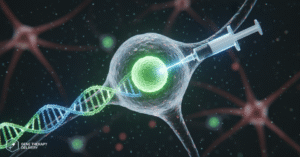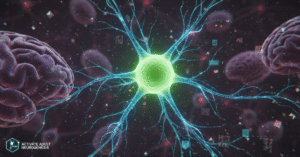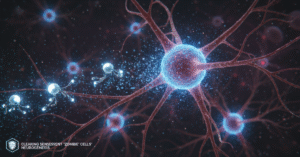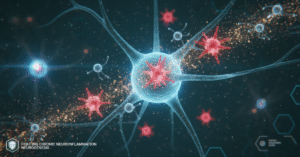For the longest time, the science community treated the human brain as a finished product. It was a firm belief: once neurons are lost, there is no definitive answer to how to regenerate lost brain cells. This idea made age-related memory decline feel inevitable.
But today, new research is demolishing that belief. Recent, groundbreaking breakthroughs are not just offering hope; they are showing specific, targeted mechanisms that can restore brain function.
These scientific advancements promise a future where cognitive decline is not just slowed down, but actively reversed.
As someone who tracks these facts meticulously, I believe the transition from theory to real-world application is closer than ever. Let’s explore the 5 incredible breakthroughs science is tackling this ultimate biological challenge in 2025.
The Challenge: Why Does Memory Fail as We Age?
Most age-related memory issues aren’t caused by mass cell death. Instead, they stem from two primary problems: faulty electrical communication and chronic brain inflammation.
The key to fixing this is to address these underlying molecular issues first.
1. The LGI1 Protein Restoration (Molecular Tweak)

The most exciting recent discovery points to a protein called LGI1 (Leucine-rich Glioma Inactivated 1). In an aging brain, the levels of LGI1 drop significantly.
This drop causes the brain’s memory circuits (in the hippocampus) to become over-excited and noisy.
Researchers successfully restored this LGI1 protein in aging animal models. By quieting the neural “noise” caused by the missing protein, they observed a dramatic reversal of memory loss. This targeted molecular tweak is a direct answer to restoring lost function.
2. Gene Therapy Delivery Systems (The Repair Vehicle)

Identifying a faulty molecule is one thing; fixing it is another. A crucial step in how to regenerate lost brain cells involves effective delivery.
Modern gene therapy uses advanced, non-toxic “vectors” (often modified viruses) to safely transport the genetic instructions for producing the necessary LGI1 protein directly into the target brain cells.
This gene therapy approach is being refined to ensure the treatment is safe, precise, and permanent. It represents the “how-to” step—the exact method of delivering the regenerative instruction.
3. Activating Adult Neurogenesis (Natural Cell Growth)

While we can’t fully regrow huge chunks of the brain, a section of the hippocampus can generate new cells (a process called neurogenesis) throughout adulthood. However, this process slows down dramatically with age.
New research focuses on identifying specific environmental and molecular triggers—like certain types of specialized exercise or newly discovered growth factors—to reactivate this dormant ability, encouraging the brain to naturally continue the task of how to regenerate lost brain cells.
4. Clearing Senescent “Zombie” Cells (Cellular Cleanup)

Senescent cells are damaged, aging cells that refuse to die. They sit in the brain, constantly releasing inflammatory signals that harm nearby healthy neurons and suppress regeneration. They are often called “zombie cells.”
The development of senolytics—drugs designed to selectively kill these senescent cells—is a game-changer. By clearing out this toxic debris, the brain’s environment becomes much healthier, allowing natural repair mechanisms to kick in and function more efficiently.
5. Fighting Chronic Neuroinflammation (Calming the Storm)

Chronic, low-grade inflammation is often called the “silent killer” of brain function. It is a major factor in the progression of cognitive decline.
New therapeutic strategies are focused on immune system modulation—specifically, reprogramming certain immune cells (like microglia) to switch from a damaging inflammatory state to a protective, debris-clearing state. Calming this storm is vital for creating the ideal internal environment needed for true cellular regeneration.
Conclusion: A New Era of Cognitive Health
The progress in 2025 has moved us far beyond simple supplements and generic advice. We now have a molecular roadmap detailing how to regenerate lost brain cells—or, more accurately, how to restore them to peak functionality.
The convergence of molecular biology (LGI1), targeted delivery (Gene Therapy), and supporting therapies (Senolytics and Neurogenesis activators) means that personalized medicine for brain aging is rapidly approaching. This is why following facts and science on FACTOVATE is essential: the future of a long, sharp life is no longer a dream; it is becoming a scientific certainty.

